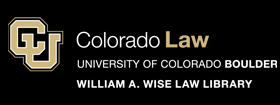Document Type
Article
Publication
University of Michigan Journal of Law Reform
Year
2012
Citation Information
Paul Campos, The Crisis of the American Law School, 46 U. Mich. J.L. Reform 177 (2012), available at https://scholar.law.colorado.edu/faculty-articles/142.
Abstract
The economist Herbert Stein once remarked that if something cannot go on forever, it will stop. Over the past four decades, the cost of legal education in America has seemed to belie this aphorism: it has gone up relentlessly. Private law school tuition increased by a factor of four in real, inflation-adjusted terms between 1971 and 2011, while resident tuition at public law schools has nearly quadrupled in real terms over just the past two decades. Meanwhile, for more than thirty years, the percentage of the American economy devoted to legal services has been shrinking. In 1978 the legal sector accounted for 2.01 percent of the nation's GDP: by 2009 that figure had shrunk to 1.37 percent--a 32 percent decrease. These two trends are not mutually sustainable. If the cost of becoming a lawyer continues to rise while the economic advantage conferred by a law degree continues to fall, then eventually both the market for new lawyers and for admission to law school will crash. In the early years of the 21st century, this abstract theoretical observation has begun to be confirmed by concrete events. The ongoing contraction in the employment market for new lawyers has combined with the continuing increase in the cost of legal education to produce what has begun to be recognized as a genuine crisis for both law schools and the legal profession.
Copyright Statement
Copyright protected. Use of materials from this collection beyond the exceptions provided for in the Fair Use and Educational Use clauses of the U.S. Copyright Law may violate federal law. Permission to publish or reproduce is required.


